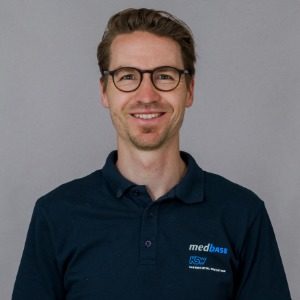Regenerative runs help you to get back into training more quickly after strenuous competitions or training sessions – but only if you follow a few rules.
 Author: Georg Hasselmann, sports and exercise scientist MSc, Head of Performance Diagnostics Medbase Abtwil and Winterthur WIN4
Author: Georg Hasselmann, sports and exercise scientist MSc, Head of Performance Diagnostics Medbase Abtwil and Winterthur WIN4
To maintain and improve your performance, you need to regenerate. The core elements of regeneration are: Equalise your fluid balance, replenish your glycogen stores, get enough sleep – and exercise. But please do the latter only moderately.
Exercise stimulates blood flow and your metabolism. This will replenish your stores more quickly and repair micro-damage to your muscle cells faster. The aim of regenerative runs is to get you back into training quickly after a competition or very intensive training session.
One hour at most
For athletes with a busy running routine who normally complete a high volume of training, easy runs make sense – but only if they don’t last too long and you run at a low intensity.
As a rule of thumb: the regenerative run should take about 50 % of the time you normally jog and a maximum of 60 minutes if you want to regenerate. It is a mistake to think that you will gain more if your recovery run lasts longer. The opposite is true.
Performance Diagnostics at Medbase
Medbase’s sports scientists and sports physicians assess your performance level with an endurance test. Based on this, they explain to you clearly and simply how to optimally incorporate the results into your training. Book now.
There are good alternatives to regenerative running
The alternatives are at least as good as regenerative running, because they also reduce the “orthopaedic stress” on the joints. These include light cycling, brisk walking and/or a bit of aqua jogging.
Regeneration in the water offers three advantages over regeneration on land: Your legs are relieved in the water, the hydrostatic pressure has a slight compressive effect on your muscles and the water slightly cools your joints and muscles. All of this can additionally support your regeneration.
Brisk walking is also easier on your joints and bones than running. Walking also has the advantage that you can easily integrate it into your daily routine.
An original alternative to casual running is jogging on the “Alter-G“, the anti-gravity treadmill. It was originally developed by the US space agency NASA, but is now primarily used for the rehabilitation of athletes who have been injured or undergone surgery. In the “Alter-G”, the athlete wears trousers connected to the treadmill and is “lifted” from below using air pressure. This reduces their own weight by up to 80 per cent when running, which relieves the musculoskeletal system enormously.
Those who don’t need regenerative running
Regenerative runs are not necessary for beginners or for athletes who only run twice a week anyway. In this case, the body usually has enough time to regenerate before the next training session. If you belong to this group, think about whether you really want to replace a productive training session with regenerative training.
However, if you have enough time and would like to speed up your recovery with an additional session, then it is best to use the alternatives mentioned above, as even easy, “regenerative” running is a strain on the musculoskeletal system for beginners.
WHO IS MEDBASE?
Medbase is the largest multidisciplinary sports medicine network in Switzerland and offers specialised services for athletes, clubs and sports associations at all levels of activity in the fields of sports medicine, sports physiotherapy, performance diagnostics and training advice.


